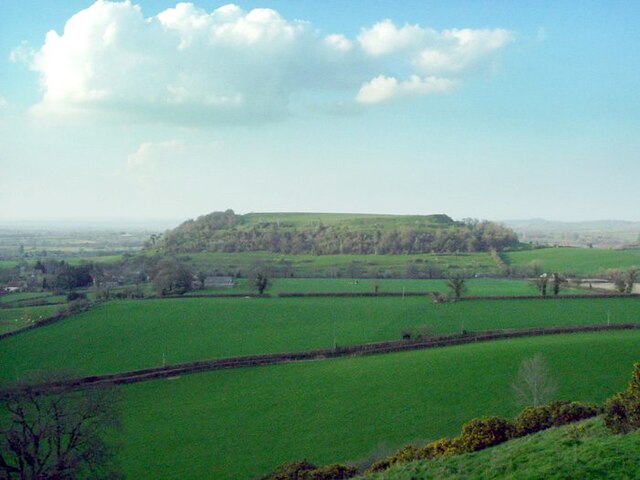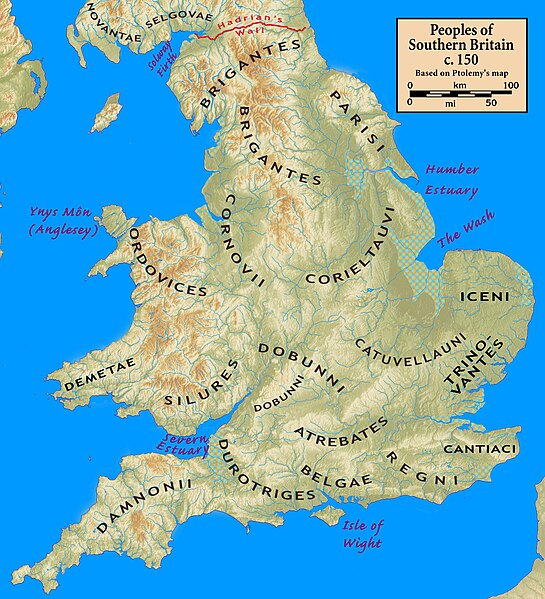Dumnonia is the Latinised name for a Brythonic kingdom that existed in Sub-Roman Britain between the late 4th and late 8th centuries CE in the more westerly parts of present-day South West England. It was centred in the area of modern Devon, but also included modern Cornwall and part of Somerset, with its eastern boundary changing over time as the gradual westward expansion of the neighbouring Anglo-Saxon kingdom of Wessex encroached on its territory. The spelling Damnonia is sometimes encountered, but that spelling is also used for the land of the Damnonii, later part of the Kingdom of Strathclyde, in present-day southern Scotland.
The form Domnonia also occurs and shares a linguistic relationship with the Breton region of Domnonée.
Cadbury Castle, Somerset, a possible early Dumnonian defensive site
King Doniert's Stone in Cornwall, believed to commemorate Donyarth, the last recorded king of the rump state of Dumnonia
The Britons, also known as Celtic Britons or Ancient Britons, were an indigenous Celtic people who inhabited Great Britain from at least the British Iron Age until the High Middle Ages, at which point they diverged into the Welsh, Cornish, and Bretons. They spoke Common Brittonic, the ancestor of the modern Brittonic languages.
Celtic warrior recreation, including carnyx and a replica of the Waterloo Helmet
Recreated Celtic village at St Fagans National Museum of History, Wales
The Staffordshire Moorlands Pan
Tribal groups in southern Britain c.150 AD






